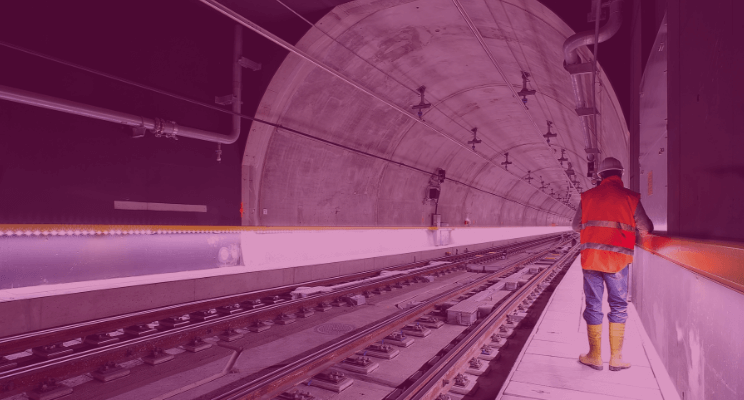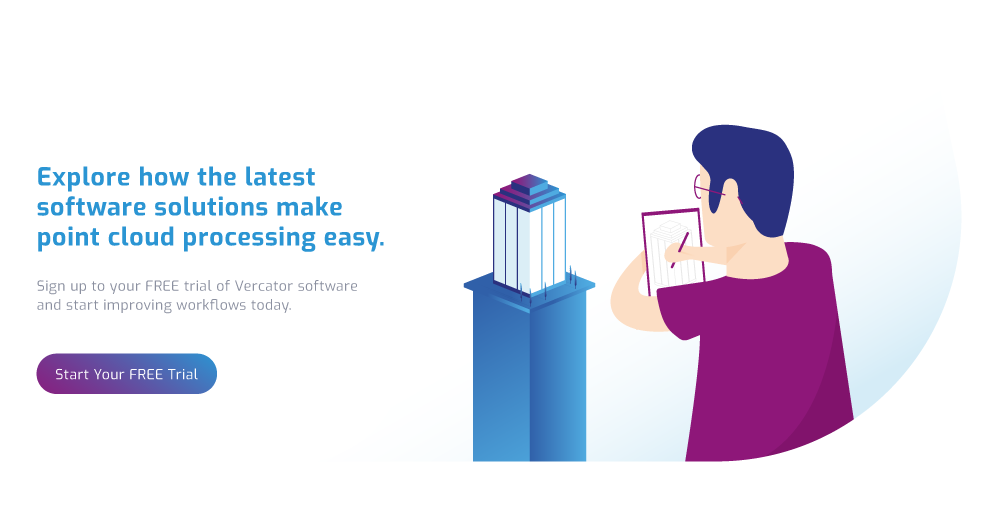Digital engineering: what to expect from the coming decade

Digital technology is rapidly transforming engineering. What does the next decade hold? A focus on closer collaboration, integration and information sharing will transform construction, planning and maintenance. Digital technology and its interconnection with physical space will be a huge driver of this change.
Digital engineering can be described as creating, capturing and integrating data using a digital skillset and possibly digital mindset. Perhaps the biggest change we face is the move from tangible to intangible assets as the industry moves further into digital engineering and manufacturing. To quote Roland Daane of Royal HaskoningDHV: “We never changed the process, so we kept working in an analogue way with digital tools”.
The introduction of digital engineering (which includes technology, process, standardisation and collaboration) means the process has been turned on its head. In the future, design will drive production. The tools and techniques that will enable this shift in engineering over the coming decade are what will be discussed here.
Robots on the rise
As robots becoming increasingly commonplace in our homes, economies of scale will reduce the cost and increase the flexibility of robots in the workplace. Robots can already be seen building houses and designing rocket parts. This trend will only increase. We are entering an age of automated robots, all designed to improve efficiency and real-time customer experience — changing the future of industrial automation.
Sensors will help robots navigate and get the information they need to help humans. Cameras will support precision and control tasks. Laser scanners will be deployed to create virtual perimeters that can shut down robots before encountering humans.
Businesses will be able to drive efficiency by deploying robots in environments which are unsafe or inhospitable to humans. Warehouse robots are a good example — as they bring items to human workers for packaging, only comparatively small areas of their vast real estate portfolios need to be heated and made comfortable for the humans who work alongside the machines.
Collaborative robots may also be more acceptable politically, encouraging harmonious working relationships between humans and machines could be a trend in the future.
Increased standardisation and security
In all forms of digital engineering, as we collaborate and share designs and information, there are two barriers that emerge: standardisation and security. There has to be a consolidation of the standardisation needed for AI enabled robots to achieve mass market penetration. Regulators will have a part to play here, as frameworks are put in place to govern the ways that personal data and intellectual property can be collected and used by autonomous machines, autonomous home and industrial assistants.
Additive manufacturing becomes the norm
Aerospace and the automotive industries are at the forefront of additive manufacturing. But the medical industry is also finding new ways to use 3D printing. Moving forward, it will be not only new technology and materials that drive the take up of 3D printing, but standardization and compliance. What will need to be resolved in the future is the need for inspection and verification of 3D manufactured parts.
For 3D printing to really take off in these areas, engineers will need a way to verify quality. A complete digital trail of everything from materials, equipment and process parameters per parts, to delivery is needed to ensure parts meet standards and regulations.
One method that is showing the way in this area is using CT scans to inspect plastic parts. This could potentially be worked into a production line. A recurring theme for digital engineering in the future will be the marrying-up of scanning technology with modelling tools. As we will address later, point clouds and LiDAR are playing an increasingly important role here in addition to CT scans.
More materials to print
While plastic printing has been at the forefront of 3D printing, offering many cost-effective options, more and more materials are being added to the 3D printing portfolio. Metal 3D printing, including steel, titanium, gold and silver, are all becoming established mediums.
In addition to plastic and metal, additive manufacturing can be used to create products from glass, rubber and composites. As complex and lightweight parts are able to be printed faster and stronger, intensive manual labour processes usually associated with 3D printing might also become automated.
The real BIM
Building Information Modelling (BIM) is a pioneering attempt for the construction industry to tackle the cultural shift required to address a fully collaborative environment and improve overall productivity.
While this initiative is itself is over 10 years old, it is only now becoming an industry standard. More importantly, it is evolving to match the true potential it was always intended to deliver.
What sets BIM apart from collaborative CAD is the delivery of a database-first, single-source-of-truth dataset that allows the entire construction team to work from the same resource pool. However, this is not realised in most current uses of the term BIM, or regulations such as the UK’s BIM Level 2.
Not only will real, database-first BIM become the norm, true BIM will become “just the way we now make buildings.”
Product modelling is already a central part of product development in manufacturing and central to the model is a repository of all data about a product which serves various activities in the product’s lifecycle — a definition which bears a strong similarity with the current BIM descriptions.
Single source of truth, database-first design technologically enabled processes exist across all sectors of design, manufacturing and construction. The utility is particularly obvious within construction. But it is likely to take hold in other industries as well.
The widespread use of reality capture technology
Reality capture technology aligns physical assets with digital models. This can be done to inform the creation of a model or inspect production for quality assurance against a model.
The increased accessibility of reality capture technology is allowing its use in far more spaces. For example, in the construction industry, “scan-to-BIM” is becoming a popular means of ‘importing’ physical assets into BIM datasets. Scans of construction projects are also taken to compare progress to planning. Prefabricated parts can be scanned for quality assurance — increasing the use of this construction technique and making it easier to engage with cutting-edge construction techniques such as 3D printing.
When details matter, one of the most common reality capture technologies deployed LiDAR — light detection and ranging. LiDAR laser scanners are going through a renaissance at the moment. Advances in multi-stage vector based processing have allowed the stitching of scans (scan registration) to be undertaken far more quickly. By reducing the time it takes to create a scan, the cost of commissioning a scan is lowered, allowing for their dynamic use in a growing number of situations.
Fundamentally, the widespread use of the technology is creating an information-rich environment driving the broad trend of harnessing information to guide the planning and execution of engineering projects.
The digital twin
A digital twin is a digital replica of physical assets (physical twin), processes, people, places, systems and devices. By bridging the physical and the virtual world, data is transmitted seamlessly allowing the virtual entity to reflect the physical, and vice versa. The digital representation provides both the elements and the dynamics of how a product operates and lives throughout its life cycle.
This trend ties in directly with BIM and reality capture. Reality capture technologies like point clouds and LiDAR, along with database-first platforms like BIM provides means of interacting with digital twins and producing the data needed for their creations.
No doubt, advances in the technology outlined will improve the link between digital and physical elements increasing the adaptability, autonomy, efficiency, functionality, reliability, safety, and usability of these cyber-physical systems.
The potential of cyber-physical systems could move in several directions, including: intervention (e.g., collision avoidance); precision (e.g., robotic surgery and nano-level manufacturing); operation in dangerous or inaccessible environments; coordination (e.g., air traffic control); efficiency (e.g., zero-net energy buildings); and augmentation of human capabilities (e.g. in healthcare monitoring and delivery).
The next decade in engineering will be shaped by interconnected, information-driven systems
The emergence of a data ecosystem where all the stakeholders in an industry come together and share data, experience and project knowledge is the goal. The emergence and interrelation of reality capture, digital twins and product models such as BIM, show the way forward. It is no exaggeration to maintain that it’s the only way forward for manufacturing and construction.
The path for digital engineering in the coming years is a dual one: partly bottom-up, partly top-down. The bottom-up approach is to exploit the increasingly sophisticated technology outlined to foster collaboration, integration and better information flows. The top-down approach requires the thoughtful and bold development of the overall regulatory and security framework for digital engineering. It is encouraging that the governments of almost all industrially developed nations have recognised the crucial importance of such work.
Tags: engineering


